If you are a novice in growing orchids, which varieties do you think are easy to grow?
The most important principle for novices in raising orchids is to keep the flowers alive. Therefore, when choosing orchid varieties, try to choose some less delicate varieties to raise, so as to practice. In addition, you should also consider the price of orchids. It is recommended to choose moderately priced or relatively cheap ones.
So, what aspects should we consider when choosing orchids? Lanxiangge recommends starting with the following aspects:
1. Variety selection: It is recommended that friends who are just starting to grow orchids choose varieties that are relatively simple to care for. Jianlan and Molan are recommended. The reason is simple. These two types of orchids have a large reserve and do not require complicated operations such as vernalization. They have good drought resistance and are superior to other varieties of orchids in terms of care techniques and survival rate. Therefore, novice friends can start with these two varieties.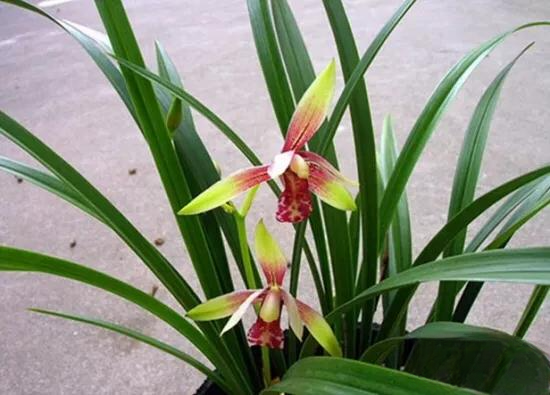
2. Price perspective: Every orchid grower will "pay tuition" when he orchid first starts to grow, which is a very normal situation. Therefore, in order to avoid huge losses, novice friends choose to breed varieties with lower breeding prices. For example, among Jianlan, there are popular varieties such as Xiao Taohong and Longyansu, with prices ranging from a few yuan to more than ten yuan per seedling. There are also some varieties like Mobao and Emeixuan, which are priced at hundreds of yuan per seedling. Although they are all Jianlan, the price difference is quite large.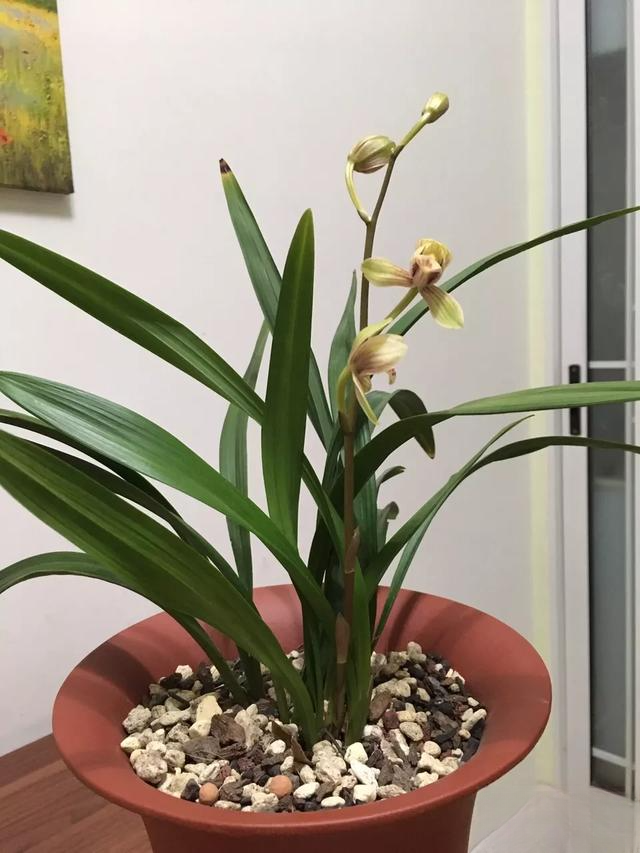
Finally, Lanxiang Pavilion recommends several orchids suitable for beginners to grow, including Molan Qihei, Jinzui, Yinbian, Jianlan Yipinmei, Junhe, Xiaotaohong, Jinhe, Qingshan Yuquan, and Tiegusu. These are all traditional varieties and easy to survive. Novice friends may wish to give it a try.
4 Comments
Thanks for the invitation. I am a farmer who likes wild orchids. My Toutiao account is: Rural Collection. I am a farmer who likes wild orchids and I share the fun of raising orchids with orchid lovers through my own experience.
Friends who have raised orchids all have one experience: the more precious the orchid, the harder it is to raise. Why is that?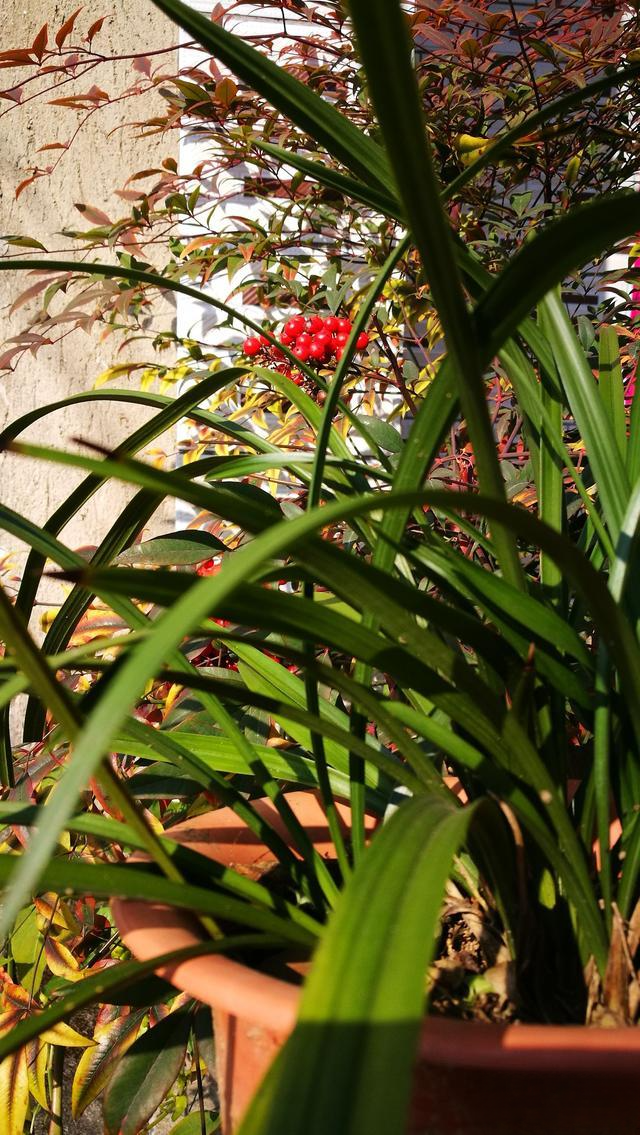
As we all know, precious orchids are rare, but now high-tech means can replicate precious orchids. However, high technology requires capital, and capital is profit-seeking. Therefore, the more precious orchid varieties are, the easier it is for capital to target them. Therefore, many technological plants such as tissue culture seedlings and cloned seedlings have appeared on the market. This kind of technological plant is not something that ordinary orchid lovers can take care of, and most of them will end in failure.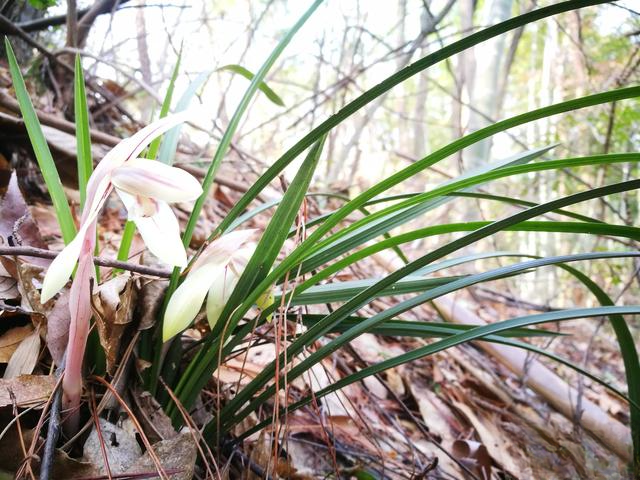
Good photographers recommend that beginners start with wild orchids. This is because wild orchids are relatively resistant and orchid seedlings that have experienced natural wind and rain are easy to care for. For those who are just learning to grow orchids, try to choose varieties from orchid-producing areas with a climate similar to your own, so that the orchid seedlings will not have a big problem of not adapting to the environment.
Raising your first orchid well can not only boost your confidence, but also help you accumulate a lot of experience. This way, if you raise some rare varieties in the future, you will not be completely confused. This is the advice from the good photographer farmer to novice orchid lovers.
If you have other questions, please leave a message in the comment area and Rural Search Society will answer them one by one.
25 Comments
Nowadays, more and more people like to grow some potted flowers at home. There are many benefits to growing potted flowers. Not only can it beautify the home environment, but it can also cultivate one's character while taking care of the cost. Among many flowers, orchids are very popular. Orchids are not only beautiful, but also have a strong fragrance when they bloom. They are also particularly suitable for indoor cultivation. Here I will introduce several orchids suitable for beginners to grow. They are beautiful and easy to grow.
1. Golden Lotus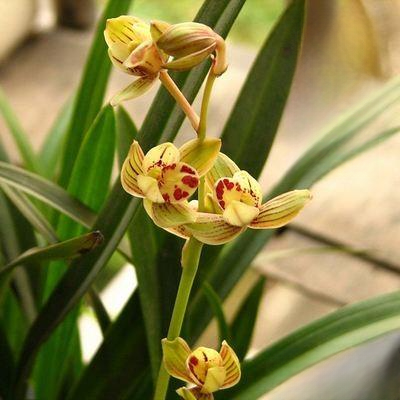
Jinhe is an orchid species native to Yunnan. It is the most high-quality and noble orchid among the four-season orchids. The flowers of Jinhe are very beautiful and bloom a lot. When the flowers of Jinhe are not open, the color is slightly red. When the petals are all open, the color slowly turns yellow. Jinhe grows extremely vigorously. When it blooms, one stem can generally produce six to ten flowers. In addition, Jinhe likes a strong light environment and has a relatively large demand for water and fertilizer. As long as there is enough water and fertilizer, it can be raised very strong. Moreover, Jinhe is very easy to breed. Even if you are raising orchids for the first time, you can raise it well.
2. Little Peach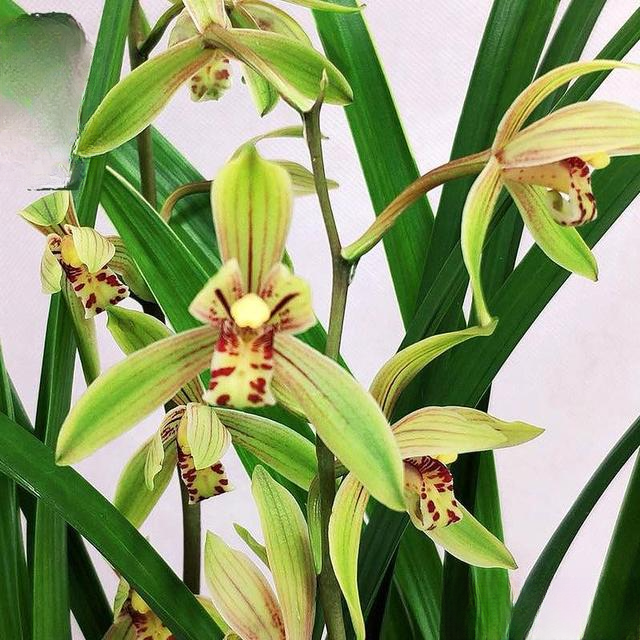
Xiaotaohong is a variety of Jianlan, which is very common in the market. Many people grow it, and it blooms frequently. Xiaotaohong's flowering period is generally from May to October. If you grow it well, it will occasionally bloom in winter and spring. Xiaotaohong has a very fragrant smell when it blooms, and is often praised by orchid growers.
3. Zhu Desu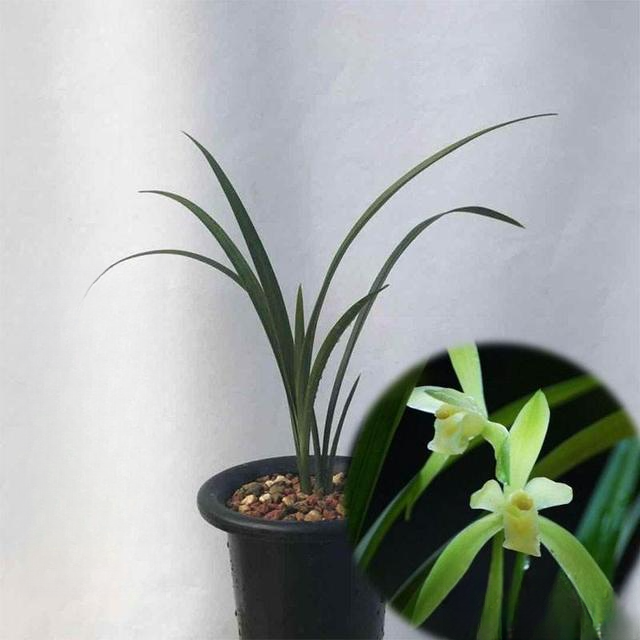
Zhu Desu is a traditional and precious variety of Jianlan. Because of its dark green leaves and strong luster, it is not only beautiful to grow, but also has a high survival rate. Zhu Desu blooms from June to November. When it blooms, it has a strong fragrance. As long as it blooms, the whole room will be filled with orchid fragrance. Zhu Desu does not have high requirements for the growth environment and is very easy to cultivate, especially suitable for novices to learn.
4. Qingshan Yuquan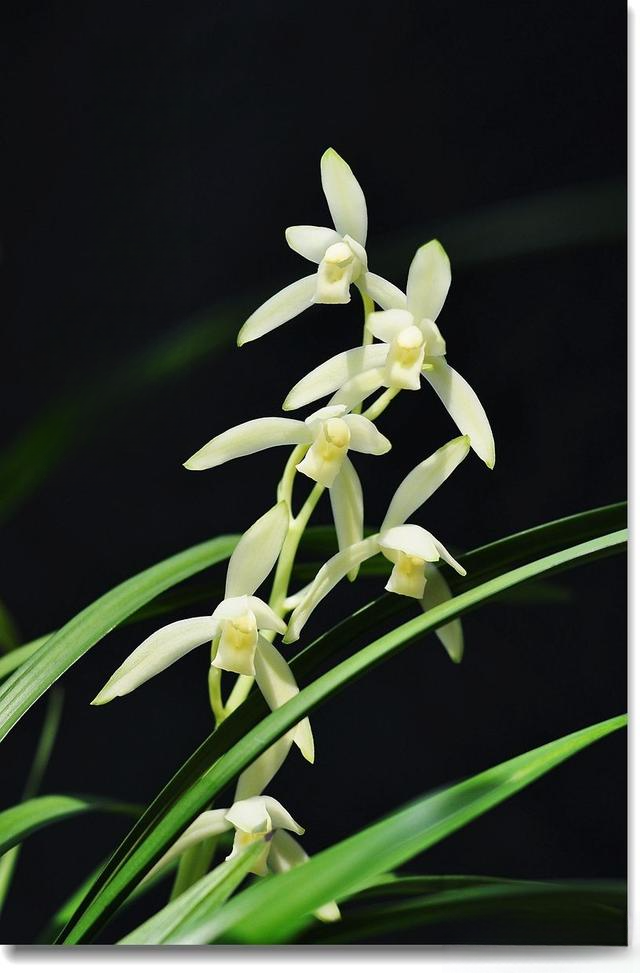
Qingshan Yuquan is a very rare variety of Jianlan. The edges of the petals of Qingshan Yuquan are green, while the middle is white. It is very attractive when it blooms and has a high ornamental value. The flowering period of Qingshan Yuquan is from May to November every year. When it blooms, the fragrance of the flower is different from other orchids. It has a special fragrance and is very suitable for novices to cultivate.
Thank you to all the flower lovers for your likes and comments. Follow "Bottle Cap 1992" and Bottle Cap will explain more flower and plant knowledge to you later.
Comment
Hello, the author of the topic. Baihua Zatan hopes to communicate with you. Baihua Zatan wants to share here the lessons of what varieties to buy for beginners to grow orchids. Orchids in experience refer to orchids among traditional famous flowers, which are what we usually call Chinese orchids. Chinese orchids are roughly divided into Chunlan, Huilan, Jianlan, Molan and Hanlan, etc. There is a well-known saying in the flower world, that is, only when you reach the highest level of flower cultivation can you grow orchids. This sentence means that orchids are precious and difficult to take care of. The owner of this forum recommends that beginners to grow orchids should buy Jianlan. Jianlan can bloom twice a year, and the flowering period is from June to October. It usually blooms twice, with the first flowering period in early July and the peak flowering period in mid-July; the first flowering period of the second flowering is in early August, and the peak flowering period is in mid-July. Jianlan likes warm, humid and semi-shady environment, poor cold resistance, and the wintering temperature is not lower than 3℃. It is afraid of direct sunlight, is not resistant to waterlogging and drought, and is suitable for loose, fertile and well-drained leaf humus. Jianlan is a strong plant with thick and long roots. The cultivation technique is relatively simple. The price of Jianlan in the market is generally not expensive, and beginners can afford it. Jianlan has lush leaves and a great momentum. It is green and steep, and very spirited. The flowers bloom in midsummer, and the temperature does not need to be deliberately controlled. The fragrance is rich and fragrant, and the cool breeze brings the fragrance of orchids, filling the garden with tranquility.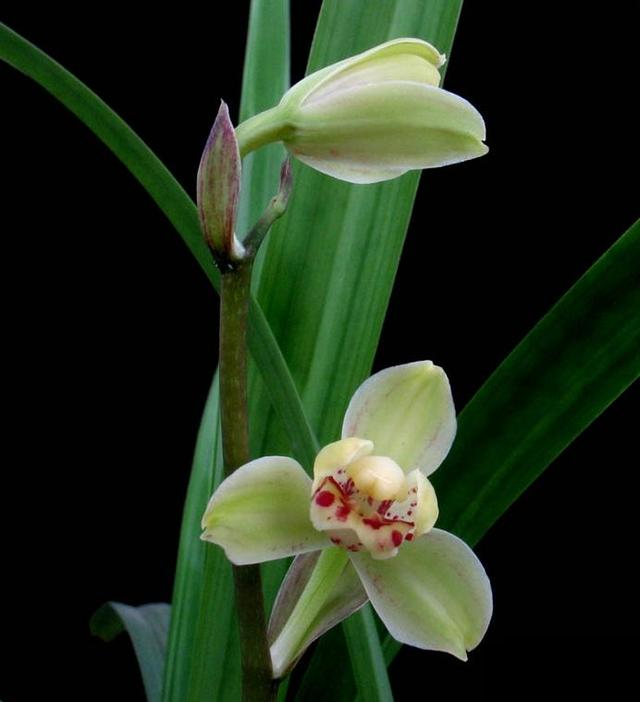
6 Comments
What kind of orchid is suitable for beginners?
If you are a novice orchid grower, I don’t recommend you to grow orchids bought online for 9.9 yuan with free shipping, because most of those seedlings are ordinary orchid seedlings that have just come down from the mountains, or tissue culture seedlings. They have not been completely tamed yet, and it is easy for a novice to cause the seedlings to die during the maintenance process. Even if they don’t die, they will not grow well because they need to adapt to the new soil and the environment of the flowerpot.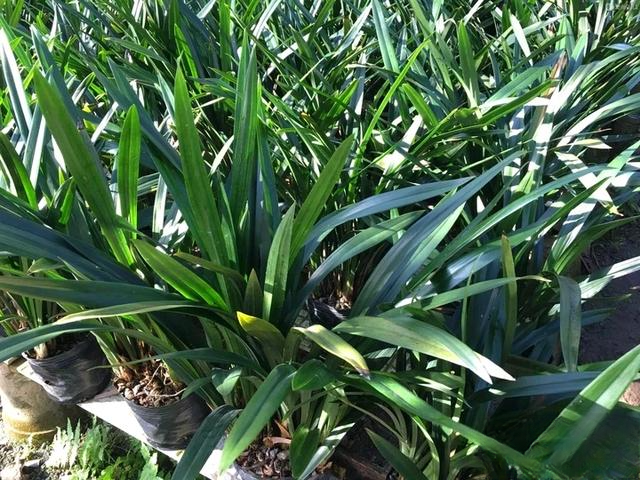
If you want to grow orchids, you can buy a few pots of Mo Lan. The price of the black orchid is relatively cheap, and the price of a pot is about 20 to 30 yuan. It is a relatively easy-to-grow orchid. When Xiao Qi first started to grow orchids, he grew Mo Lan Qi Hei. Mo Lan is easy to grow. It does not require strict light and can be grown indoors. In winter, put it next to the window, and the light through the glass is suitable for it. And it blooms every year. Too strong light will cause its leaves to dry or have spots.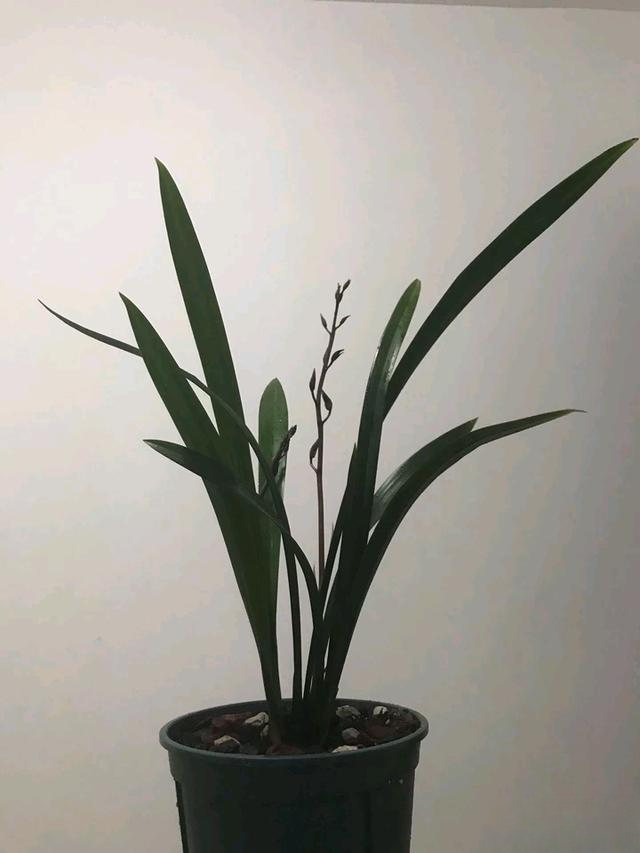
If you want to grow orchids well, the first step is to prepare a breathable soil. Orchids are generally equipped with granular soil. Xiao Qi usually uses peat soil particles and volcanic rock particles or medical stone particles. The particle size is 6 mm. After the configuration is completed, plant the orchid, and try to choose a special orchid pot with side holes. This kind of pot has good water permeability, and its root system is not easy to be stuffy, and it is not allowed to rot. If you prepare the soil and use the pot according to what I said, you can see that the pot soil is light or there is no water when you press it down about two centimeters with your fingers. Just water it thoroughly. Put it in a place with better ventilation as much as possible. As long as it is properly given some scattered light, its color is dark green, and it can grow well, and there will be no root rot and dry leaves. It can bloom for you every year.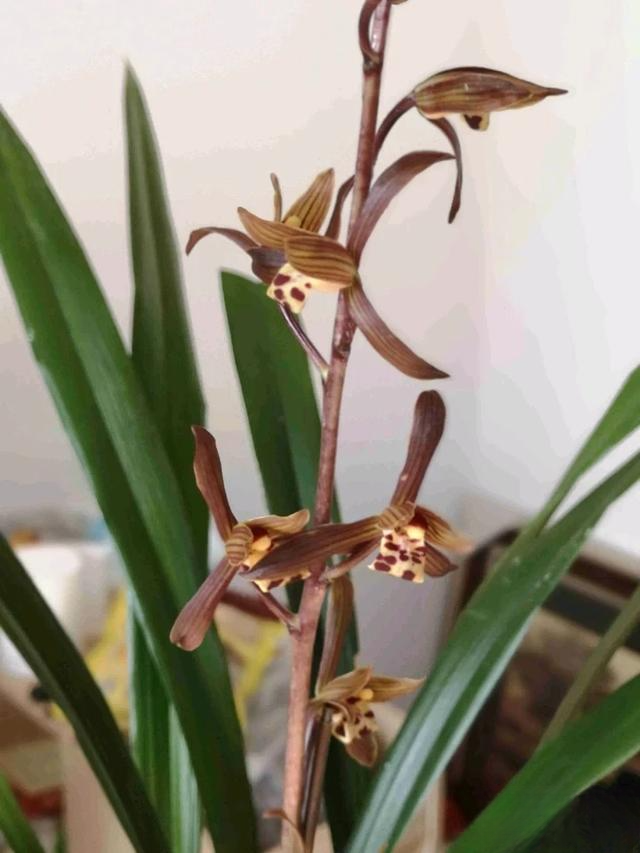
Xiao Qi likes to grow flowers and updates videos and knowledge about flower growing every day. If you also like to grow flowers, please follow Xiao Qi and help forward his support. Xiao Qi would like to thank everyone here.
2 Comments
There are more and more friends who want to grow orchids. If you have never grown orchids before and just want to buy some to practice, the first choice is Jianlan. Jianlan is easy to grow and cheap. You can buy it online, with three sets of plants for 9.9 yuan including shipping.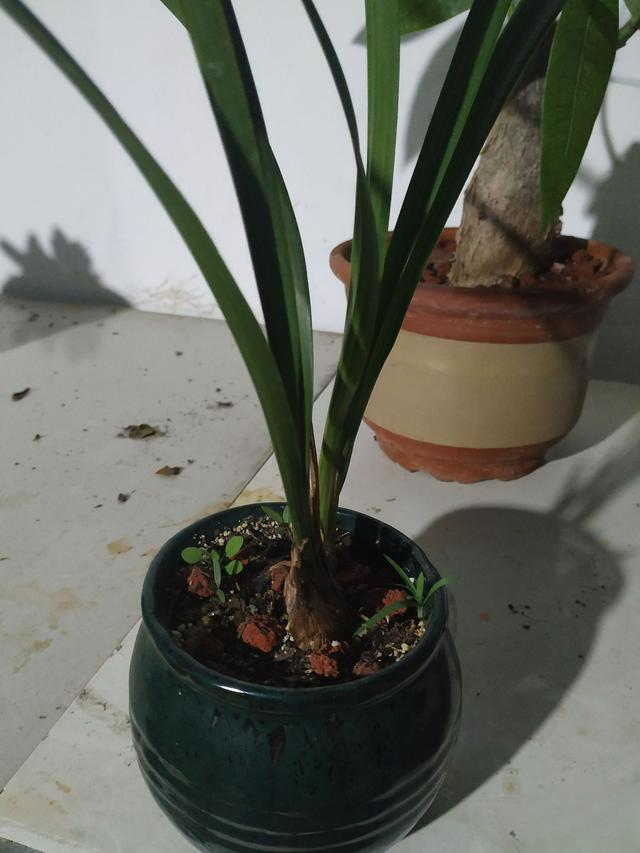
Since you want to grow orchids and practice, you must have a flower pot. An ordinary purple clay orchid pot costs about 50 yuan, and an ordinary red pottery imitation purple clay pot costs more than 10 yuan. In fact, such flower pots are expensive to buy but cheap to use. As long as they are not broken, they can be used for decades.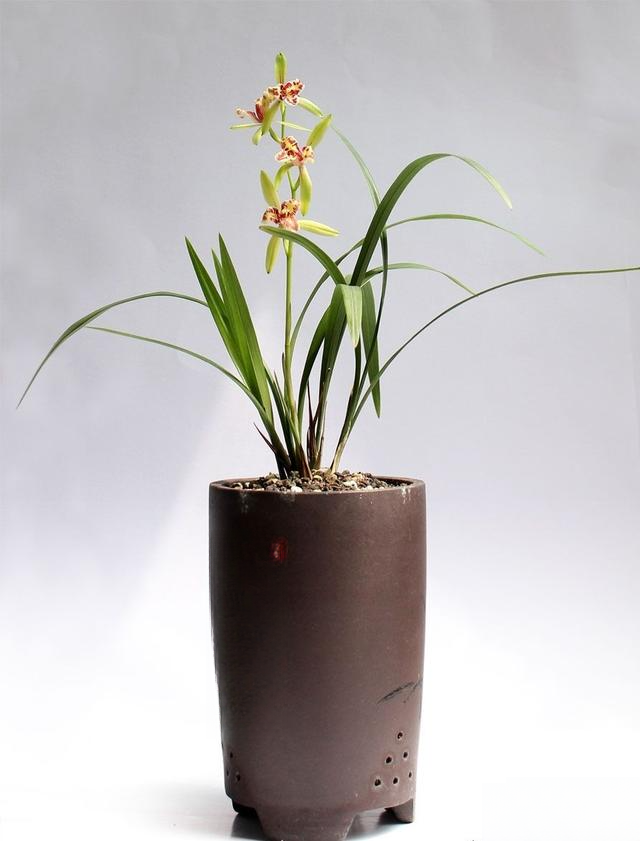
As for potting soil, there are many stores selling special soil for orchids on the market, and there are also many that can be bought online. I suggest you buy a better flower soil. After all, when you first start to grow orchids, the soil must be better. This will save you the trouble of improper watering. The orchid root system is fleshy and relatively drought-resistant. Orchids are most afraid of waterlogging. A good special soil for orchids is only more than 20 yuan, and can be used for several pots of orchids. If you want to buy some cheap orchid soil, it will only cost a few yuan, but the quality will be much worse.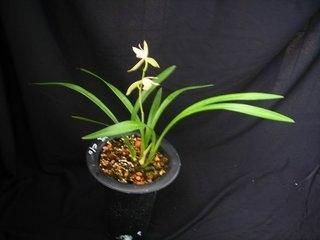
After buying Jianlan, remove the dry roots, cut off the roots, and then soak the roots in a solution of carbendazim for ten minutes. After potting, place it in a semi-shaded scattered environment for a week, and then maintain it normally, pay attention to watering, and no fertilizer is needed in the early stage. All added up, the better ones cost less than 100 yuan, and the worse ones cost less than 30 yuan. Isn't it very considerate?
I’m Xiaowei. If you find it useful, please follow me and give me a like. Thank you!
1 Comment
Chlorophytum is not an orchid. Many people think that Chlorophytum is an orchid. Before I really understood orchids, I also always thought that Chlorophytum was an orchid. After I learned more about it, I found that Chlorophytum and orchids are two completely different plants. At that time, I even specially raised five or six pots of Chlorophytum.
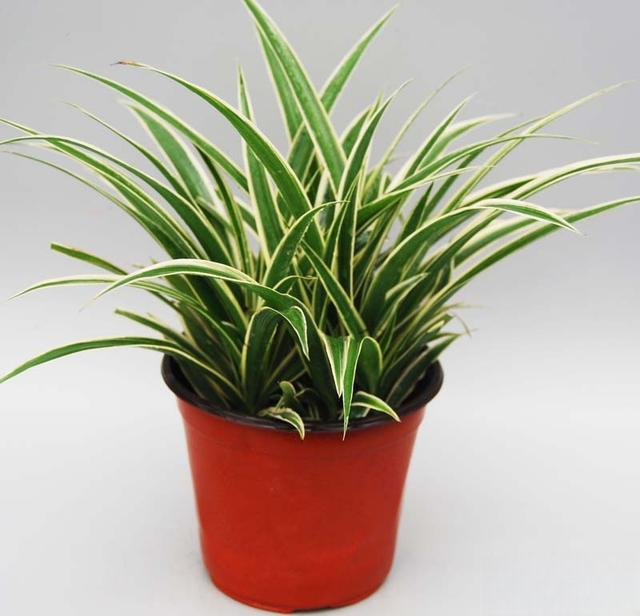
Chlorophytum, also known as hanging pot grass, hanging orchid, fishing orchid, orchid grass, and crane orchid, is native to South Africa and is a perennial evergreen herb. The biggest difference between it and orchids is the root system. The root system of orchids is aerial roots, as thick as cigarettes, with a diameter of about 12.5px, while the root system of Chlorophytum is fibrous roots, very thin, with a diameter of about 2.5px. When they are very strong, they will be relatively thick, but definitely not as thick as orchids. In addition, there is a layer of waxy substance on the surface of the leaves of orchids. The light intensity is very good, and the leaves are also stiff, while the surface of the leaves of Chlorophytum is not, and they are very delicate. The flowers of the two are also different, and the orchid is very fragrant.
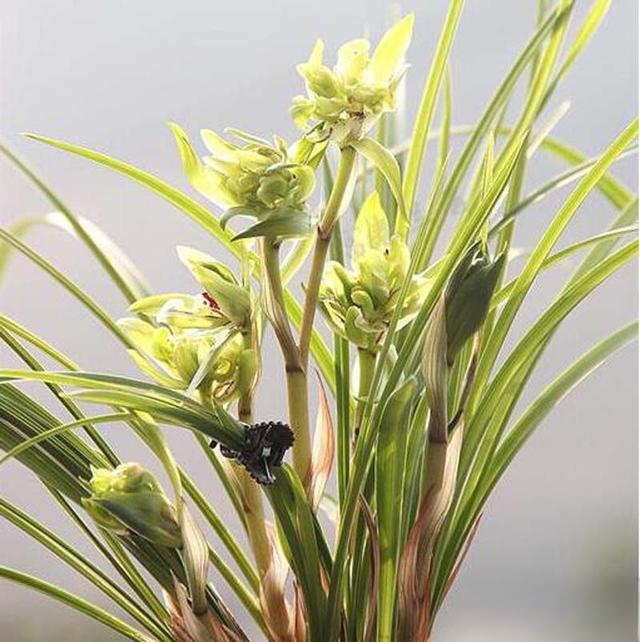
So, what orchid varieties are suitable for beginners? I think that since you are a beginner, you lack understanding of the habits of orchids and have insufficient experience. You should start with a few cheap orchids and not choose expensive ones. After all, orchid cultivation has a certain threshold. You need to understand some basic knowledge of orchids and be familiar with the nature of orchids. Otherwise, you will only raise orchids on a whim, and in summer, there will be only pots left.
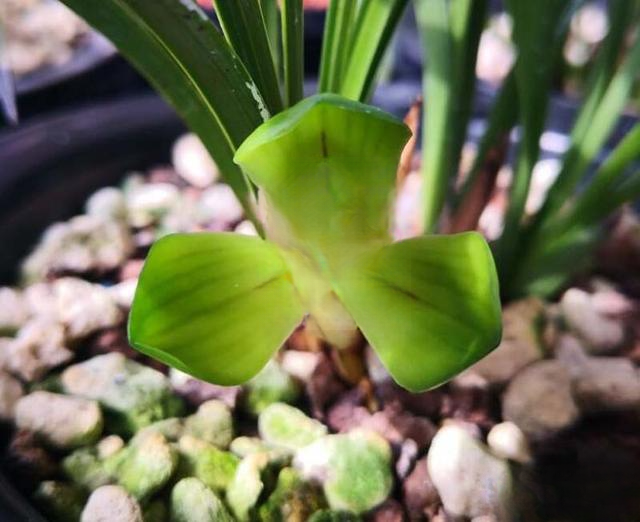
A novice who wants to raise orchids must first try to keep them alive, and then try to keep them well. This requires a process. Don't underestimate the cultivation of orchids. It is really different from other green plants and flowers. If other plants are well raised, orchids don't have to be well raised. Novices can choose to start with mountain orchids. Mountain orchids are also called wild orchids. They have strong adaptability to the environment and are not easy to die. They are suitable for practice, but when planting, you still need to use granular planting materials with good air permeability, otherwise the roots will rot. No matter what variety of orchids, remember: choose cheap, strong, and healthy ones. The above experience is for your reference. If you like it, please like or leave a comment. Orchid Bar-Mei Fei, written in Jingshan City, Hubei Province on June 19, 2019!
Orchid Bar has been focusing on the dissemination of orchid knowledge since 2012. It publishes professional orchid knowledge every day, taking you to have an in-depth understanding of orchids and easily grow orchids. Click on my avatar to get more orchid knowledge!
2 Comments
After reading your description, I envy you a lot. You taste tea and learn to grow orchids. No matter how noisy the world is, I will keep a calm and leisurely attitude...
Now speaking of orchid cultivation, let me share my views below and I hope to share them with you.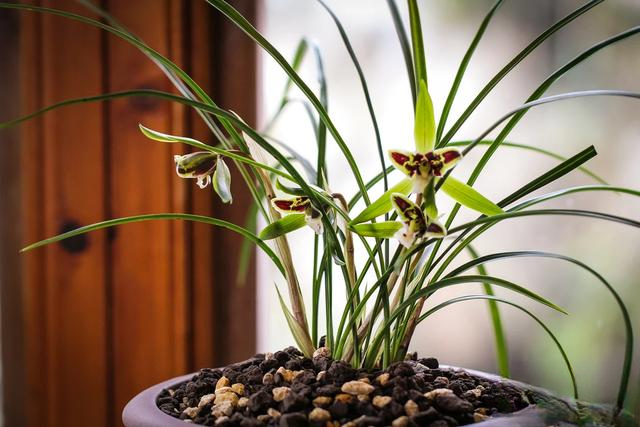
Novice orchid growers should naturally choose those that are easy to survive, easy to bloom, and relatively cheap. Doing so can not only practice, but also improve their confidence in growing orchids when the flowers bloom, which can be beneficial without any harm.
Relatively speaking, the easiest to grow, the easiest to bloom, and the cheapest are Jianlan, such as Xiao Taohong, Siji Daqing, etc. These varieties are not prone to root rot if they are watered more, and are more drought-resistant. Compared with other orchids, they do not require high skills. In addition, if Jianlan varieties such as Xiao Taohong are properly maintained, they can bloom four or five times a year, allowing you to find self-confidence and achieve success. It is a good choice for you to start with Jianlan!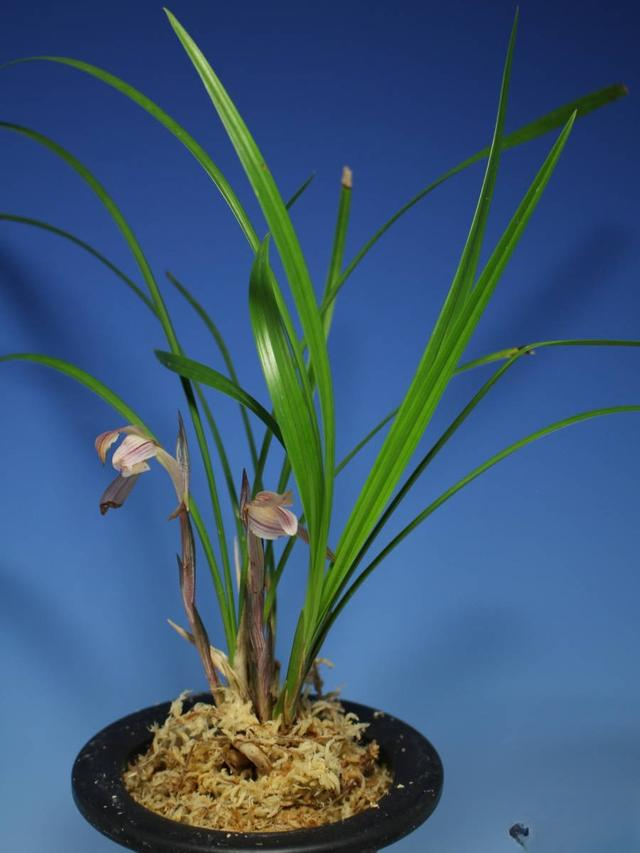
Novice orchid growers can grow some black orchids, spring orchids, etc. after gaining some experience, and gradually improve. Don't rush to buy cymbidium orchids, because it is too difficult for them to bloom again after they bloom.
Novice flower growers should also pay attention to the choice of planting materials. They should try to choose suitable, loose, breathable, slightly acidic planting materials, such as orchid stone, decomposed pine needles, etc. The choice of planting materials is particularly important, and it can even be said to determine the success or failure of orchid cultivation.
In addition, watering and spraying are also the key to orchid cultivation. Watering should be poured on the edge of the flower pot, and never on the leaves or the center of the flower, otherwise the heart will rot. The same is true for spraying water, and it should not be sprayed on the leaves or the center of the orchid. You can spray water around in a mist to increase the air humidity, or you can put a basin of water next to the flower pot to maintain the air humidity.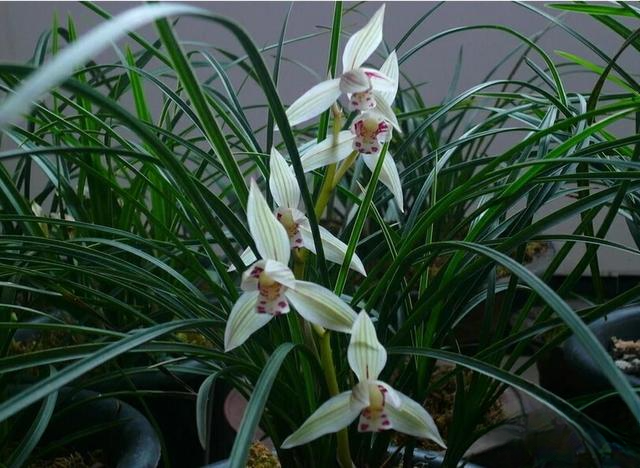
The above are the two most important points in the selection and maintenance of orchid varieties. As for other techniques such as reasonable exposure to light, many experts on Wukong Q&A have already talked about it many times, so you can pay attention!
I hope you can become an orchid expert soon and live a carefree life! Thank you!
10 Comments
I have been raising orchids for five years and have summarized some of my own methods and experiences. They are all basic things, written specifically for beginners as a reference. Experts please avoid them.
1. Pots: Breathable and water-repellent, moderate size
Clay pots are the best, but they are rough; purple clay pots are the second best, but they are more expensive; plastic orchid pots are breathable, moisturizing, easy to manage, and cheap, making them suitable for beginners. The pots should be of moderate size. The ancients said, "Large-leaf plants will not grow well in small pots, and small-leaf plants will easily rot in large pots."
2. Planting materials: breathable, water-draining, moisturizing, and light
Beginners should choose granular planting materials, which are a mixture of hard and soft planting materials. Hard planting materials include planting stones, pebbles, orchid stones, bricks, charcoal, burnt mud, etc. Soft planting materials include fairy soil, red soil, peanut shells, bark, coconut shells, etc. The planting materials must be well-rotted, otherwise they are easy to generate heat and damage the roots.
I use Zhu Dayong's planting material ratio scheme, one equal part of planting stone, fairy soil, and melting skin, the size of a fingernail, and add a little snake wood to mix. The planting materials must be sieved. The planting stone should be soaked for a week, and the water should be changed three times during this period to remove the heat. The fairy soil should be selected with moderate hardness and softness. The melting skin is soaked for a day and night, and the snake wood is boiled in water. All the planting materials are drained until they are "moist", mixed evenly according to the proportion, and put into a container and sealed for a few months to let the various planting materials get familiar with each other. Take it as needed in the future.
Beginners can directly purchase Zhu Dayong’s Orchid Planting Tool, which is convenient and easy to use. It helps novices get started with orchid cultivation and boosts their confidence.
The planting material before planting should be mixed evenly and kept moist. If it is too dry, the roots will be easily damaged, while if it is too wet, it will be easily infected.
3. Planting: Orchid seedlings should be planted shallowly and the planting material should be shaken solid
Repotting and planting should be done in spring and autumn. The best time to repot is late autumn and early winter, avoiding the peak growing season.
Orchids like to grow in clusters, and a cluster of three seedlings is ideal for three generations. If you want to separate the seedlings, first find the "road" where the old seedlings are connected, then pinch the old seedlings with both hands, twist them back and forth, disconnect the "road", and finally pull the orchid roots back and forth to separate them. If you use scissors, burn them with fire to disinfect them before use. Remove empty roots and rotten roots.
Sprinkle some quicklime powder on the wound, then place it in a high place in a cool environment to dry the wound. Plant it when the roots just turn white and soften.
When planting, place large-grained planting stones or large pieces of red bricks at the bottom of the orchid pot to make it water-repellent and breathable. Place the orchid roots in the pot naturally, with the old seedlings slightly closer to the edge of the pot to leave enough space for the new seedlings to germinate. Hold the middle of the mother seedling, fill it with a little planting material, shake the orchid pot to allow the planting material to fully contact the orchid roots, then fill it with a little more planting material, and shake the pot again. When the planting material is filled to almost the top of the reed, sprinkle the planting stones or red bricks the size of mung beans around the reed head, because the environment around the reed head for rooting and germination should be light and moist, and it does not like organic matter, otherwise it will easily rot. Then fill the planting material until the reed head is the largest, and then sprinkle a thin layer of planting stones the size of peanuts on the surface of the pot to keep it moist. Grass on the surface of the pot is optional. If you like to plant a little embellishment, don't plant too much.
Orchids should be planted shallowly. Too deep will cause the rhizome to be too wet for a long time and get sick, while too shallow will easily expose the roots.
Do not water the orchids immediately after planting to prevent infection of the wounds. Generally, water them after 24 hours. Newly planted orchids should be placed in a cool environment and take at least a month to acclimate. During this period, the orchids absorb very little water and fertilizer. Do not fertilize or water too frequently. Keep them in the shade.
Comment
Hello, OP. I think beginners should first understand the growth habits of orchids. Orchids like to grow in semi-shaded and semi-sunny, well-ventilated, fertile, air-permeable and well-drained humus soil. After understanding its growth habits, we can accumulate more experience from actual practice. For example: the amount of watering, the timing of fertilization, the ratio of artificially cultivated planting materials, the prevention and control of pests and diseases, etc. Then I think the most suitable orchid for beginners is "Bee Orchid". 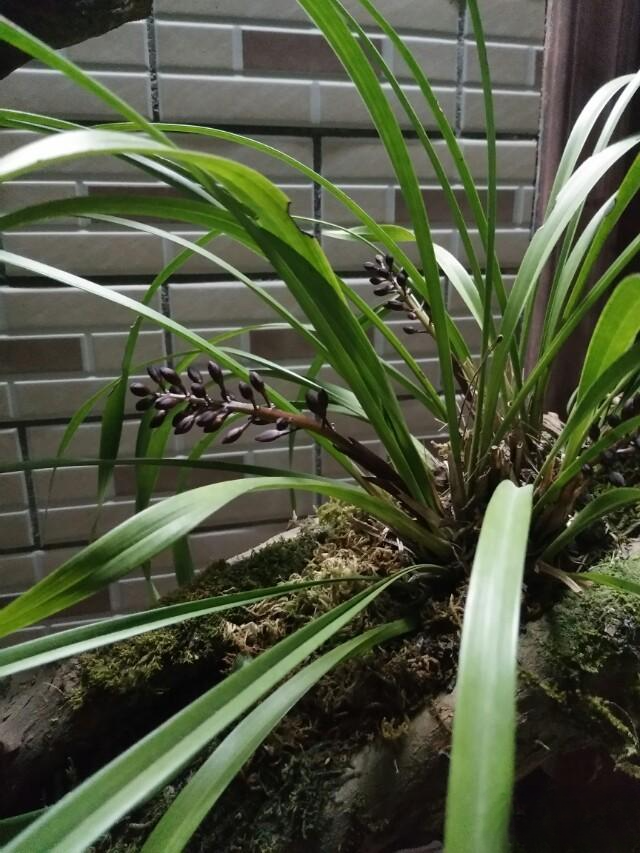
Bee Orchid is a perennial bulbous orchid. It is an epiphytic orchid. It grows on cliffs by the stream or on the branches of large trees by the forest at an altitude of 300-1600 meters. It relies on accumulated rotten leaves to provide nutrition. The flowers are numerous and gorgeous. The only drawback is that it has no fragrance or only a little fragrance. But it is still quite ornamental. It has strong vitality. It has strong resistance to high and low temperatures. It is also much more drought-resistant than other types of orchids. 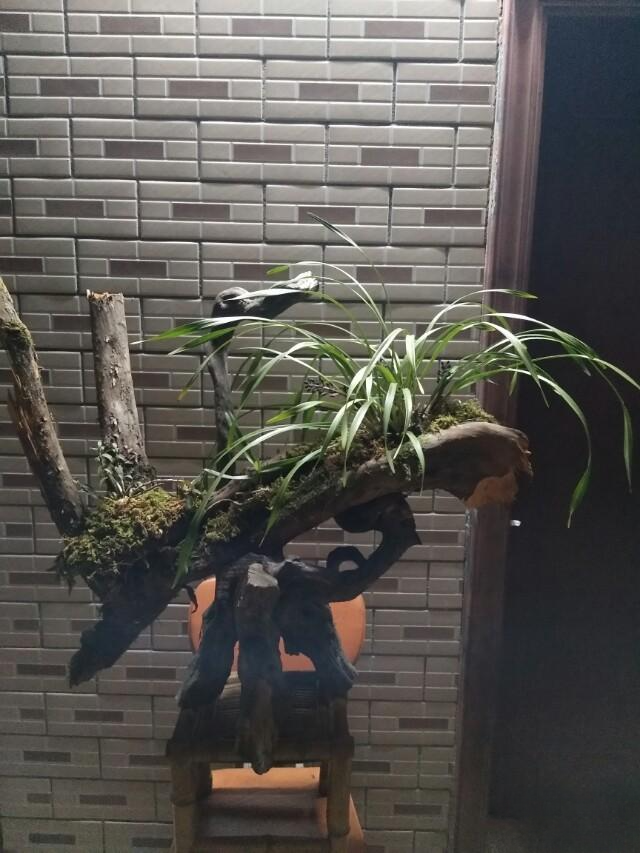 Bee Orchid can be planted in the same way as other types of orchids. It can also be allowed to grow on
Bee Orchid can be planted in the same way as other types of orchids. It can also be allowed to grow on
tree stumps as shown in the picture. But this requires a process and patience. I have cultivated orchids for many years before I have such a pot. No matter what kind of orchid, the planting material must be breathable and well-drained. The breeding environment must be well-ventilated, which is a common feature. 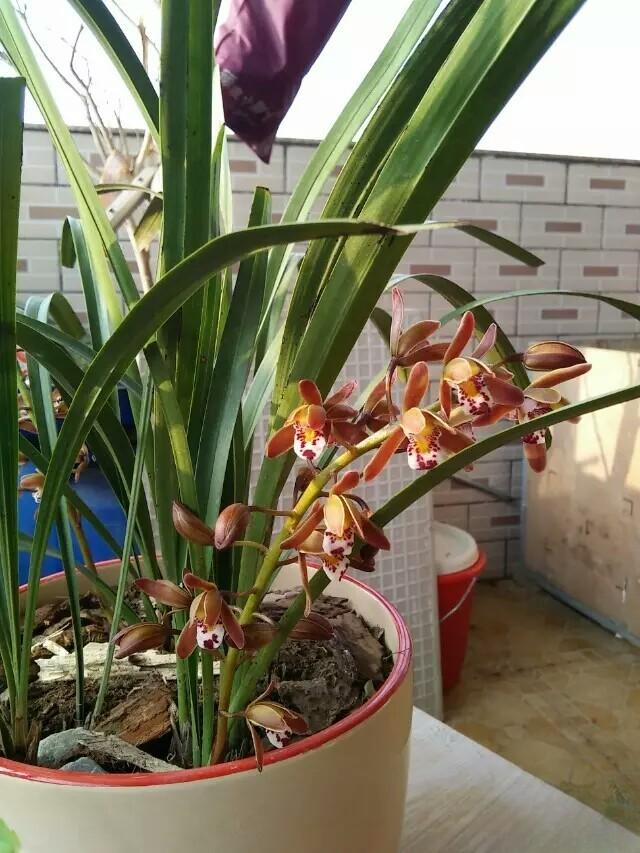 The attached pictures are all bee orchids that I raised when I first raised orchids. I hope it can bring you some help or inspiration. Raising orchids requires care and more carefulness. Otherwise, it is best not to waste their lives.
The attached pictures are all bee orchids that I raised when I first raised orchids. I hope it can bring you some help or inspiration. Raising orchids requires care and more carefulness. Otherwise, it is best not to waste their lives.